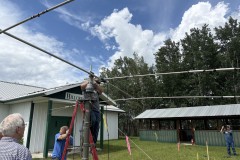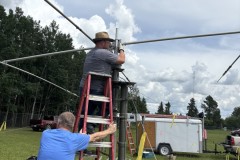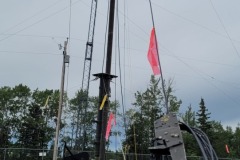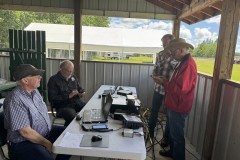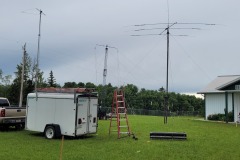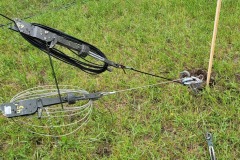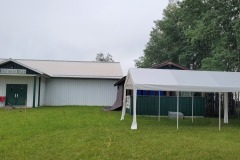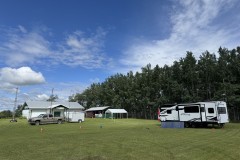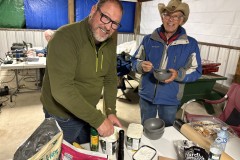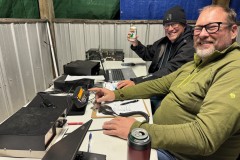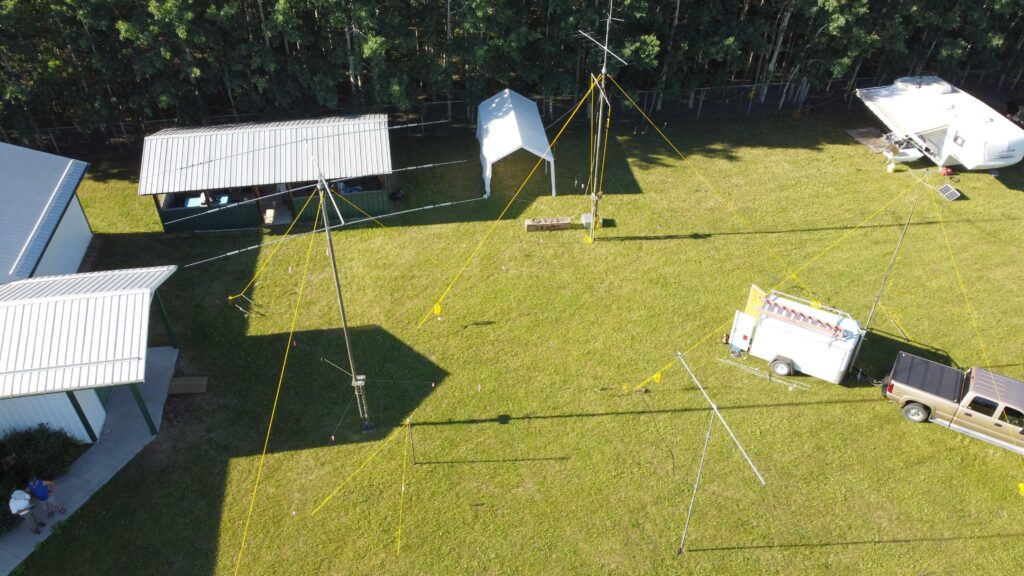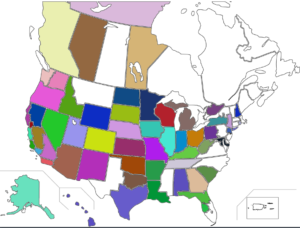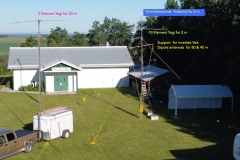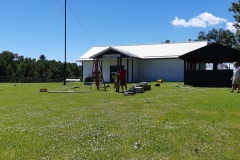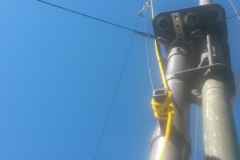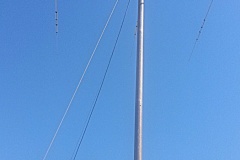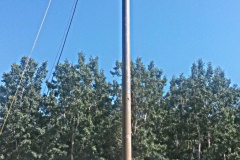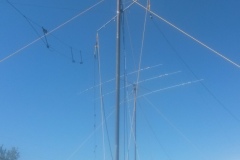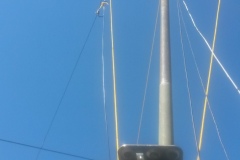- Home
- Registration
- Site Tools
- Articles
- Swap n Shop
- Contesting
- Grounding information for everyone
- History of the Central Alberta Amateur Radio Club
- CAARC owned Repeaters
- Club Repeater Info
- GMT Time Conversion Table
- VE/VA6 Incoming QSL Bureau
- Pine Lake Tornado Friday July 14, 2000.
- Amateur Radio to the Rescue
- CANWARN
- HAM Nation with Bob Heil K9EID
- Net info
- Events.
- ARES
- Links and On line study course.
- Field Day 2019
- Members D/L
- Forum/Swap and Shop
ARES
ARES call outs or on air exersises
Cold Lake Airshow
Jan 14th
Note from VE6CIA: All input, ideas or suggestions from Alberta amateurs is welcome, to save this event from extinction, whether it be ARES/ACS related or not.
Gentlemen,
I’m writing today in hopes of getting long term ARES/ACS training in place for Alberta.
Cold Lake Amateur Radio Society (CLARS) has been supporting the Cold Lake air show for a little over 20 years. We support this event with assistance from amateurs all over Alberta, and it has become a very well supported and anticipated event. Cold Lake holds airshows every two years, and we support this event by spreading amateurs throughout the crowd and looking for issues. If issues are discovered we report through our net control, who then forwards the issue to the Military Command Post for resolution.
Our assistance is highly valued by the airshow organizing committee, who in turn supports us with free admission, lunches on both days, as well as free airshow T shirts and ball caps.
This event perfectly mirrors the work that ARES/ACS would be called on to support in a real life event.
Our Club is aging, and our membership has dwindled. In the past our club could support the event on our own (albeit with reduced effectiveness)- that is no longer the case. As a result our club is reluctant to proceed as hosts, in that if support from other amateurs doesn’t happen we’re unable to do what we promised- and that’s a risk we cannot take. In addition, I’ve been doing the bulk of the work organizing the event, and I too am aging out of being able to continue.
I suggested that Alberta ARES/ACS take this event over from CLARS, and to date no one has been willing to step up. I understand the reluctance- however I believe that I may have a more palatable option- have ARES/ACS take ownership of the airshow and use it as our Alberta SET.
If the ARES/ACS leadership owns the event, they could allow a different radio club (or clubs) the opportunity to run the event every second year. This would provide tremendous training for both the ARES/ACS team lead, as well as ARES/ACS support personnel throughout the province.
Note that Cold Lake and Edmonton International Airport are both on a two year opposing cycle for airshows- the SET could be a yearly event if we included the Edmonton show.
We are at a critical junction with ARES/ACS- our relevance as “last chance” long haul communications is at an end (internet, satellite phones and Starlink have pretty much ended our usefulness). However, we have a huge potential for use in emergencies as observers- be it fire, floods, or whatever, a self led, self supporting group of people is a huge bonus for any emergency manager. This airshow is an exemplary example of that, and one I’d hate to see lost.
I have one more go left in me, and would be very happy to assist in getting the airshow scheduled for this summer organized. I have the routine down pretty well, and the bulk of the difficulties have been identified and overcome. However, if I do not have someone to pass the torch to then I’m done- and more importantly we’ll have lost a tremendous training opportunity.
Please note that CLARS will happily provide full access to the local VE6ADI repeater, as well as free camping at Mike’s and my farms.
Thanks for your time- and I’m available anytime to amplify this email and discuss options.
Cheers- Garry
FG Naylor
VE6FGN
ARES/ACS rep, CLARS
CAARC Field Day 2025 June 27th – 29th
Jul 21st
CAARC Field Day 2025
June 27th – 29th
Here are the pictures and videos of the field day. Thanks to those who sent me the pictures and videos.
The CAARC field day started out with a downpour just after we got the first tower and antenna up in the air!
Make sure you click the second page of the pictures.
Thanks to all those who came to help set up Friday and take down Sunday afternoon.
Thanks to those who operated as the band conditions were pretty good again this year.
Make sure you also click the second page of the pictures.

CAARC 2025 Field Day
Jun 8th
Be Radio Active – Attend CAARC Field Day June 27th – 29th
Your CAARC executive is currently conducting extensive planning for ARRL Field Day operations.
We invite all CAARC members and interested parties to attend and participate.
CAARC plans to have two (2) fully operational HF stations and a VHF station dedicated for this ARRL contest.
The venue location is excellent, within a short drive from Red Deer and has onsite camping and facilities available.
Thank you for your continued support of CAARC.
We look forward to seeing you at this event.
Click this link for driving directions
73
Don Westacott VE6HQ
CAARC President
Please click this link to fill in the Goggle Form to volunteer your help to make this years Field Day a success again!
Thanks in advance for your help to make this Field Day a success!

Have you paid your dues and confirmed your RAC membership to the executive?
Nov 15th
Club memberships are due in November. Please submit your dues as shown below.
Club memberships are $25.00 each or $30.00 for a family and are due now. You must be a paid-up member to be eligible to vote at the Annual General meeting in November. Cheques may be mailed to Central Alberta Amateur Radio Club, Box 1103, Red Deer, AB, T4N 6S5. If you prefer, Garry VE6CIA has also agreed to accept e-transfers for club memberships at ve6cia at gmail dot com. This is what we did for the club raffle earlier this year.
Club insurance is due. Please also confirm your RAC membership by email ( ve6cia at gmail dot com ) so we can get the best rate for the club.
can also download the CAARC membership and renewal form under the “Site tools” tab and send your dues by snail mail to the listed address on the bottom of the form or bring it to the meeting. Your support helps keep your repeaters operating and your club active.
Thank you from your executive
73 CAARC Executive

Ham radio operator jumps in to help woman in Florida during Hurricane Ian
Oct 14th
Ham radio operator jumps in to help woman in Florida during Hurricane Ian
Click this link for the full story.

Field Day Pictures 2021
Jul 5th
Thanks to everyone who submitted these pictures. Be sure to check all four pages at the bottom of the first page for all the pictures.
These are the field day results as submitted to ARRL (Thanks VA6SGL ) Great job everyone!
VE6QE_FD_Report
Central Alberta Amateur Radio Club Fathers Day June Picnic
Apr 12th
Please be advised, the Central Alberta Amateur Radio Club Fathers Day June Picnic has been cancelled till 2021 due to Covid-19.

Astronaut Owen Garriott, W5LFL, SK
Apr 16th
Amateur Radio in Space Pioneer Astronaut Owen Garriott, W5LFL, SK

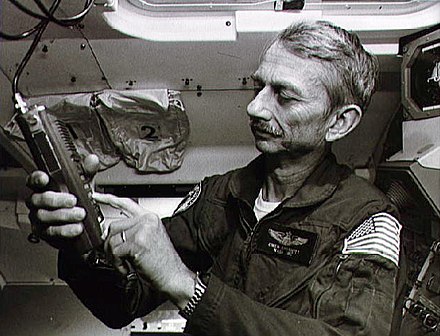
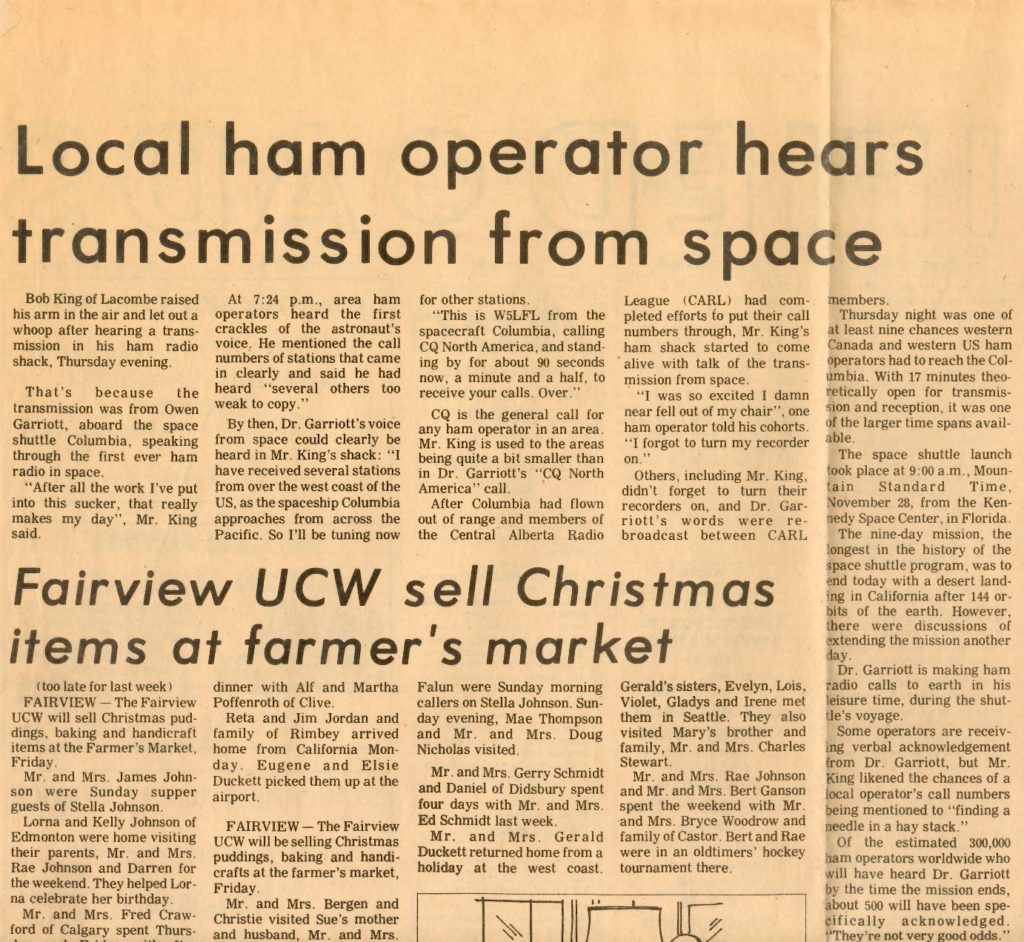
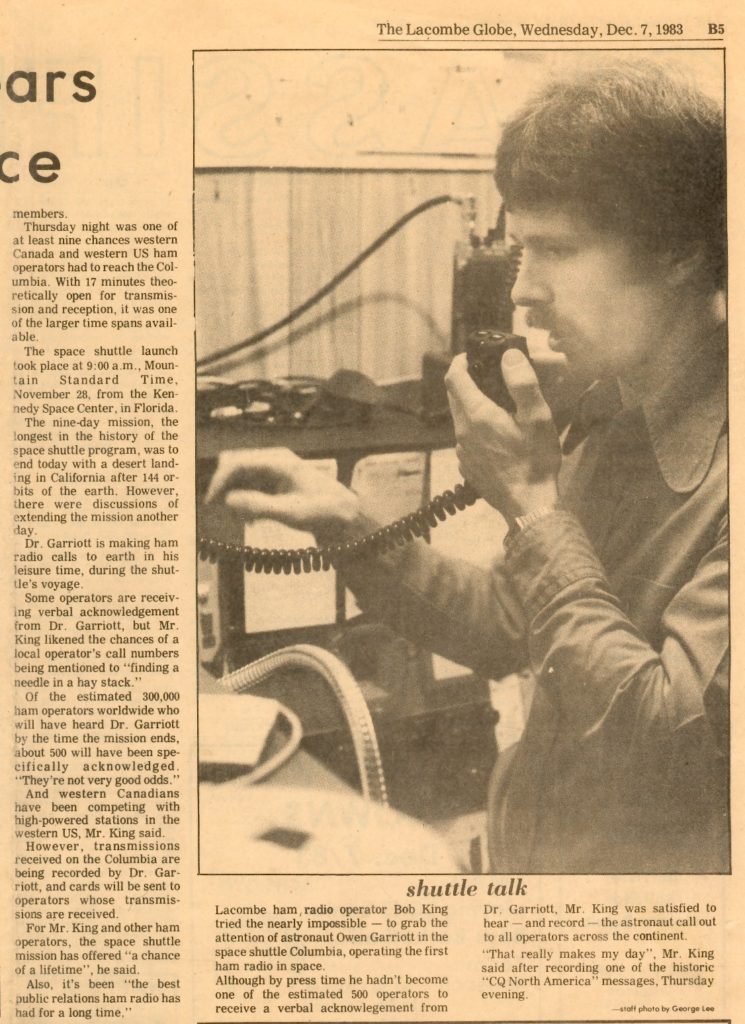
04/15/2019
The US astronaut who pioneered the use of Amateur Radio to make contacts from space — Owen K. Garriott, W5LFL — died April 15 at his home in Huntsville, Alabama. He was 88. Garriott’s ham radio activity ushered in the formal establishment of Amateur Radio in space, first as SAREX — the Shuttle Amateur Radio Experiment, and later as ARISS — Amateur Radio on the International Space Station.
“Owen Garriott was a good friend and an incredible astronaut,†fellow astronaut Buzz Aldrin tweeted. “I have a great sadness as I learn of his passing today. Godspeed Owen.â€
An Oklahoma native, Garriott — an electrical engineer — spent 2 months aboard the Skylab space station in 1973 and 10 days aboard Spacelab-1 during a 1983 Space Shuttle Columbia mission. It was during the latter mission that Garriott thrilled radio amateurs around the world by making the first contacts from space. Thousands of hams listened on 2-meter FM, hoping to hear him or to make a contact. Garriott ended up working stations around the globe, among them such notables as the late King Hussein, JY1, of Jordan, and the late US Senator Barry Goldwater, K7UGA. He also made the first CW contact from space. Garriott called hamming from space “a pleasant pastime.â€
“I managed to do it in my off-duty hours, and it was a pleasure to get involved in it and to talk with people who are as interested in space as the 100,000 hams on the ground seemed to be,†he said in an interview published in the February 1984 edition of QST. “So, it was just a pleasant experience, the hamming in particular, all the way around.â€
Although Garriott had planned to operate on ham radio during his 10 days in space, no special provisions were made on board the spacecraft in terms of equipment — unlike the situation today on the International Space Station. Garriott simply used a hand-held transceiver with its antenna in the window of Spacelab-1. His first pass was down the US West Coast.
“[A]s I approached the US, I began to hear stations that were trying to reach me,†he told QST. “On my very first CQ, there were plenty of stations responding.†His first contact was with Lance Collister, WA1JXN, in Montana.
ARISS ARRL Representative Rosalie White, K1STO, met Garriott when he attended Hamvention, “both times, sitting next to him at Hamvention dinner banquets,†she recounted. “Once when he was a Special Achievement Award winner, and once with him and [his son] Richard when Richard won the 2009 Special Achievement Award. Owen was unassuming, very smart, kind, and up to date on the latest technology.†Garriott shared a Hamvention Special Achievement Award in 2002 with fellow Amateur Radio astronaut Tony England, W0ORE.
Richard Garriott, W5KWQ, was a private space traveler to the ISS, flown there by the Russian Federal Space Agency, and he also carried ham radio into space.
EMO worker tries to drum up enthusiasm for ham radio
Oct 14th
EMO worker tries to drum up enthusiasm for ham radio
In an emergency, ham radio is an essential form of communication, Mike Johnson says

A free workshop about ham radios will be held in Sackville on Oct. 22. (Nicole Williams/CBC)
A ham radio probably isn’t the first form of communication a person thinks about in an emergency, but sometimes, it’s the only one that works.
Ham radios can use wireless transmission to send messages to battery-operated radios.
And they can be useful when large storms knock out telecommunications, says Mike Johnson, the Cumberland Regional Emergency Management co-ordinator.
He is partnering up with EOS Eco-Energy and the West Cumb Amateur Radio Club to hold a free workshop in Sackville to try get more people interested in ham radios.
Different technology
Johnson, who is also a member of the WestCumb club in Amherst, N.S., said that when we lose essential communications such as cellphones, landlines and the Internet — a ham radio can come to the rescue. Hurricane Michael, which struck Florida this week, devastated normal channels of communications.
Storms that knock out telecommunications for long periods of time create more problems for co-ordinated emergency response, he said.
He said he’s already seen how ham radios could help in New Brunswick.
In January 2017, a massive ice storm knocked out power to thousands in the northeast for days.
Operators dwindling
“It became very difficult,” said Johnson.
Today, ham radios are considered a hobby more than a necessity, and not many people know how they work.
“Our numbers are dwindling,” Johnson said of the amateur radio clubs.
But younger members are needed, especially since the clubs’ services may be needed even more as the climate changes.
“We still use Morse code to this day,” he said.
Requires a test
Johnson said there are a few steps to becoming a ham radio operator.
“You need to study, take the test, once you pass it’s a one-time cost,” he said. “It’s good for life.”
After that, it’s just buying the equipment to use. Equipment for amateur radio costs between $300 and $5,000.
The workshop will be held at the Sackville Royal Canadian Legion on Monday, Oct. 22, at 6:30 p.m.
Jack Humphries VE6JRH/VA6IX Silent Key
Apr 15th



